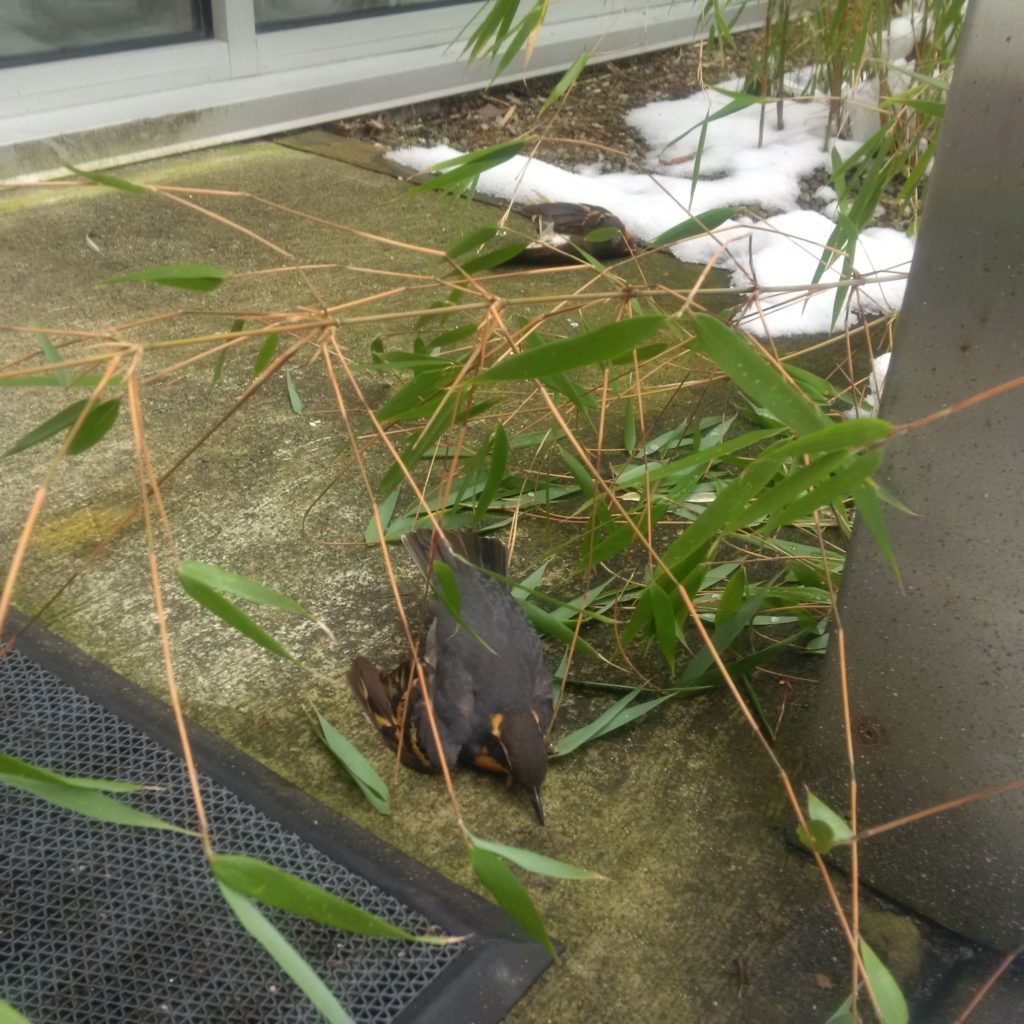Bird Window Collisions at UBC
Year-round monitoring at a Pacific coastal campus reveals similar winter and spring collision mortality and high vulnerability of the Varied Thrush.
Authors: Krista L. De Groot, Alison N. Porter, Andrea R. Norris, Andrew C. Huang, and Ruth Joy. Link.
Window collisions are the second-highest human-related source of wild bird mortality in North America. In Canada alone, about 16 – 42 million birds die from window collisions every year (Machtans et al. 2013). In June 2021, a new paper about window collisions of birds was published in the journal Ornithological Applications journal. This is the first research study in the BC to examine bird-window collisions and one of only a few to study the issue in Western North America. Mortality of birds was assessed between 2015 and 2017 at the University of British Columbia (UBC) campus in Vancouver, BC.
Collisions tend to be prevalent mainly during fall and spring migration in most cities. However, researchers with the Canadian Wildlife Service, Environment and Climate Change Canada, found that in contrast to studies conducted elsewhere in North America, collision mortality in winter was as high as mortality during the spring migratory period at UBC.

Results
In 225 days of surveys conducted around 8 randomly chosen buildings at the UBC campus, a total of 152 birds were found dead from window strikes that included at least 23 different species of birds from 10 bird families. When researchers included correction for biases due to scavenging and searcher error, they estimated that the fatalities ranged between 281 and 486 birds. Varied Thrush was the most common species to hit windows, comprising 13% of all fatalities at UBC. Other birds that have died from window collisions on campus included American Robin, Fox Sparrow, Dark-eyed Junco and Kinglets. In addition, point counts were conducted to assess the vulnerability of different bird species to window collisions relative to their abundance on campus. Birds with higher than average vulnerability included Varied Thrush (most vulnerable), Spotted Towhee, American Robin, Song Sparrow, Hermit Thrush, American Goldfinch, and Dark-eyed Junco.
The results of this study have implications for other locations in southwestern British Columbia, especially homes and institutional buildings near greenspaces and surrounded by abundant vegetation. Homeowners, governments and business owners can take action to significantly reduce bird-window collisions. Visit our Helping Birds page to learn how you can make your home and office safer for birds and protect millions of birds from window collisions. Be sure to check out this link to original article and spread the word about this important threat to birds!
Original paper:
Krista L De Groot, Alison N Porter, Andrea R Norris, Andrew C Huang, Ruth Joy, Year-round monitoring at a Pacific coastal campus reveals similar winter and spring collision mortality and high vulnerability of the Varied Thrush, Ornithological Applications, 2021; https://doi.org/10.1093/ornithapp/duab027.





